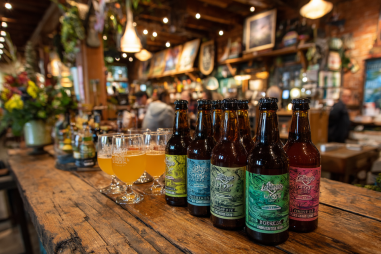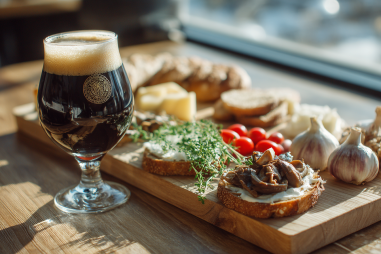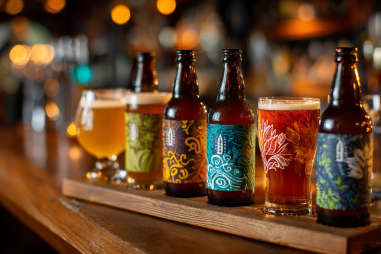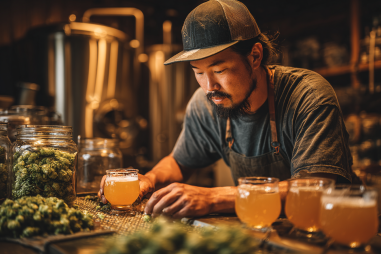Pale lager is one of the most popular beer styles enjoyed around the world, prized for its crisp, clean flavor and refreshing qualities. But what exactly goes into brewing this beloved beer? From the careful selection of ingredients to the meticulous fermentation and maturation steps, the pale lager brewing process is a fascinating journey that combines art and science. This article will guide you through each stage of that journey, diving into what makes pale lager distinct and why it continues to captivate beer enthusiasts everywhere.
The Basics of Pale Lager Brewing
Before we dive into the technicalities, it helps to understand what distinguishes pale lager from other beer styles. Known for its light color, mild hop bitterness, and smooth finish, pale lager relies on precision and control during brewing. It’s a style that emphasizes balance and drinkability, making it ideal for a broad range of occasions. Unlike ales, pale lagers require cooler fermentation temperatures and a longer maturation period, resulting in their characteristic clarity and crispness.
Essential Ingredients in Pale Lager
The foundation of any beer, including pale lager, is its ingredients. Each component plays a crucial role in the flavor, aroma, and overall profile of the finished product.
- Malt: Pale lager primarily uses pale malted barley, which provides a light color and a subtle sweetness. The malt’s enzymatic activity breaks down starches into fermentable sugars during mashing.
- Hops: Hops contribute bitterness, aroma, and freshness. Generally, noble hops like Saaz, Hallertau, or Tettnang are preferred for their mild, herbal, and slightly spicy characteristics that complement the malt without overpowering it.
- Yeast: Lager yeast (Saccharomyces pastorianus) is essential. It ferments at low temperatures (typically 7–13°C or 45–55°F), producing fewer fruity esters and a clean flavor profile distinguishable from ale yeasts.
- Water: The mineral content and purity of water directly impact the final taste. Many brewers tailor water chemistry to suit the pale lager style, ensuring neutrality and clarity in the brew.
The Malting and Mashing Process
The journey of pale lager begins with malted barley. Malting involves soaking barley grains in water, allowing them to germinate, and then drying them in a kiln. This process develops enzymes necessary for converting starches into fermentable sugars.
After malting, the grains are milled into grist and transferred to the mash tun for mashing. Here, they are mixed with hot water at controlled temperatures, usually between 62–70°C (144–158°F). This activates enzymes that break down starches, producing a sugary wort—the liquid foundation of beer. The process is carefully managed to balance fermentable and non-fermentable sugars, which influences the beer’s body and sweetness.
Boiling and Hopping Techniques
Once mashing is complete, the wort is separated and moved to the brew kettle where it is boiled vigorously, typically for 60 to 90 minutes. Boiling sterilizes the wort, halts enzymatic processes, and concentrates the liquid.
Hops are added during the boil to impart bitterness and aroma. The timing of hop additions influences their impact:
- Bittering hops are usually added at the beginning of the boil to extract alpha acids, balancing malt sweetness.
- Flavor and aroma hops are added later in the boil or at the end to preserve delicate oils that provide floral and herbal notes important to pale lagers.
After boiling, the wort undergoes rapid cooling to prepare for fermentation, typically using heat exchangers to bring temperatures down efficiently and reduce contamination risks.
Fermentation: The Heart of Pale Lager Brewing
Fermentation is where yeast converts sugars into alcohol and carbon dioxide. Pale lager uses bottom-fermenting yeast strains that operate best at cool temperatures ranging from 7°C to 13°C (45°F to 55°F). This slow fermentation reduces the production of esters and phenols, resulting in the clean, crisp flavor signature to this beer type.
This fermentation phase may last from a week to two weeks, depending on the desired flavor profile and yeast activity. Brewers monitor factors such as gravity and temperature closely to ensure consistency and quality.
Lagering and Maturation: Perfecting the Profile
After primary fermentation, pale lager requires a lagering phase—essentially cold storage at near-freezing temperatures (0–4°C or 32–39°F). This maturation process lasts several weeks to months and is critical for refining the beer’s clarity and mellowing any harsh flavors.
Lagering allows proteins and yeast particles to settle out, resulting in the beer’s sparkling clarity. It also produces the smooth mouthfeel and subtle flavors that define the “lager” experience.
Packaging and Quality Control
Once lagering is complete, the beer is filtered, carbonated (if needed), and packaged in bottles, cans, or kegs. Quality control throughout packaging ensures the beer remains fresh and consistent in flavor. Many brewers perform sensory evaluations, microbiological testing, and chemical analysis to detect any defects or contamination prior to release.
What Makes Pale Lager Distinct in Brewing?
The distinctiveness of pale lager lies in its meticulous brewing approach focused on precision and patience. The combination of pale malts, noble hops, bottom-fermenting yeast, and extended cold maturation produces a beer that is both approachable and refined. Its clean character and moderate bitterness make it a versatile style, capable of complementing a variety of foods and social settings.
Additionally, the pale lager brewing process demands stringent temperature control and timing, which requires both skill and modern brewing technology. This ensures the signature qualities—clarity, light body, and refreshing finish—are achieved consistently.
In summary, from selecting the highest quality grains to the final stages of packaging, pale lager brewing is a carefully choreographed craft. Every step contributes to the crisp, thirst-quenching beer loved by millions worldwide, a perfect embodiment of balance and refreshment in the world of beer.







